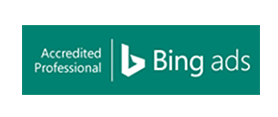A common question we get asked at Bowler Hat is how does a given business target local customers on search engines. This is seemingly a simple question but the answer really depends on the situation and before we can answer that we must first understand your situation and the local search marketplace.
This post will give you an overview of the primary ways in which you can target local customers on search engines (and multiple devices) and how this maps to local, national or even international businesses.
Our goal here is not to give a detailed technical overview of each approach but rather a high-level strategic view of what makes sense based on your specific situation.
The Local Search Marketplace
There are three primary ways to appear in localised search results:
- Paid adverts
- Standard organic search results
- Localised search results
Each of these options has their pros and cons and not all options will be available to all businesses hence understanding the suitable and practical channels is critical to local success.
1. Paid Adverts
Paid adverts via Google’s AdWords allow granular targeting – no matter where you are you can target advert campaigns at customers with laser precision. You have the most control here with the keyword that triggers the listing, the advert copy and the landing page. You have to bid and satisfy the AdWords quality score metric to ensure your advert is visible yet no other option gives a business such granular control.
2. Organic Search Results
By creating content that specifically addresses the needs of a given user in a given location you can gain some visibility in organic search. An example may be a location page for a national business with regional stores. These pages should focus on really providing solid local information to ensure the best possible chance of local visibility in the organic results.
3. Local Search Results
Search engine results are now highly localised for search terms with local intent. That is if you search for an emergency plumber you will see a selection of results below the adverts but above the organic results that are heavily influenced by the location of the business. To appear in these results you must have a physical location in the targeted area – a search for ‘care hire in Birmingham’ will show local businesses in these local results. Often, the organic results below the local results will also be influenced by these location signals.
International & multi-language
Things do get a little more complicated if you target multiple countries and even more so if you target multiple languages within each country. Again, there are several options here and the right approach must be carefully determined for each business.
- Do you have an office in the country?
- Do you have a website specifically for that country?
- Do you have one main website that targets many countries and languages?
The online titans like Amazon tend to use a website for each location. This automatically takes care of geographical targeting (given the correct TLD). The alternative is to have sections of your site ‘geo-targeted’ to each country you target. You would generally use either sub domains or sub directories to target a section of the site to that specific audience.
uk.example.com us.example.com www.example.com/uk/ www.example.com/us/
Where a single site must target multiple countries, languages and locations within a country things can get very complicated very quickly so the technical implementation must also be balanced with the goals here. We can soon end up with a site that has thousands of targeted locations and this can present management issues
1 website* 10 countries * 5 languages in each country * 100 locations for each language
= 5000 location microsites on one domain.
In practice, this can be a nightmare to manage so the right decision has to be carefully balanced on the objectives, man hours and budgets available for the project.
What’s best?
The important point is there are no concrete right and wrong here and the right approach is dependent upon objectives and budgets. The approach for a national business targeting major cities is going to be different to an international company targeting major countries.
There are a few obvious answers to common situations here:
- Single Location Business – one site with a TLD focusing on Paid, Organic and Local
- Multi-Location Business – one site with location pages focusing on Paid, Organic & Local
When you move beyond these to international businesses things get a little murkier. My personal feeling is that individual sites for each country work best but it is the approach that takes the most time, work and money. We have seen companies targeting several countries succeed with simple geo-targeted subdomains or directories. This really depends on business specific questions every bit as much as technical ones so it’s always worth consulting with your marketing team and a technical SEO expert.
If we have multiple languages within a given country then use the hreflang tag will help the search engine serve the correct content to your users (and ensure no duplication issues arise through similar content (en–uk & en-ie for example).
So, we have a seemingly simple question with a not so simple answer and the real answer is always – it depends. It depends on your situation. It depends on your objectives. It depends on the scale of your business. It depends on your budget. Most importantly of all, it depends on what is likely best for your users.
We see a lot of businesses make a real hash of this and if you are investing in a new website that is targeting multiple locations, countries or languages then it is not always easy to fix issues baked in at the design and build time. Certainly, understanding how basic location targeting works at a mega, metro and micro levels will save you lots of pain in the long run (and deliver markedly better results).
Drop a comment with any questions – always happy to help!







One Response
People usually do not think about this but running a local business can actually be very fun. Unlike some global company that does shipping all over the world and relies heavily on internet promotion, local businesses are preoccupied with local market. In that sense, you can do numerous things for you local community and perform offline marketing that can give you a reputation of a cool, local enterprise. On top of that, you can connect everything that you do offline and online and create an awesome mix. Thank you for the post Marcus!